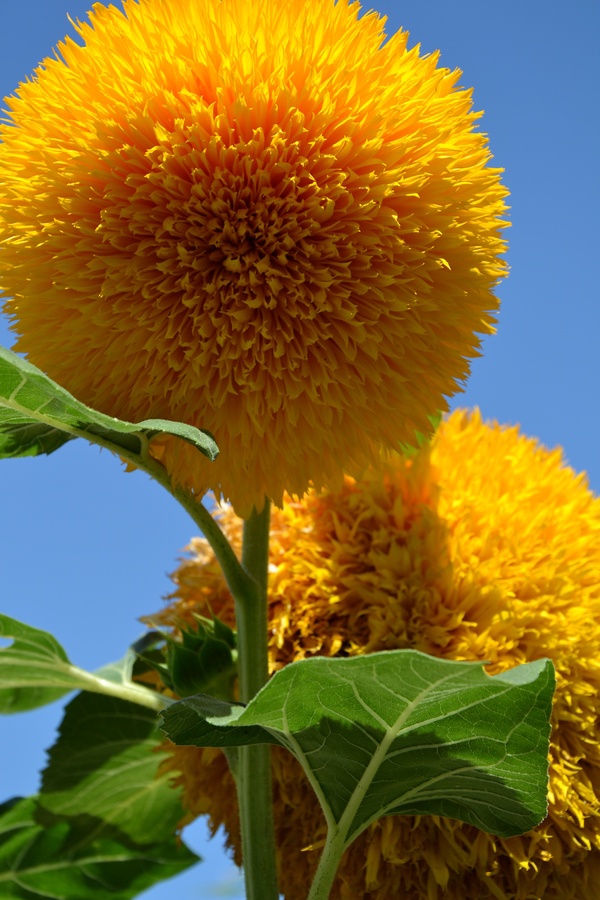Teddy bear sunflowers are a delightful addition to any garden, known for their fluffy, pom-pom-like blooms and vibrant yellow hues. These charming flowers not only brighten up your outdoor space but also attract pollinators like bees and butterflies, making them a favorite among gardeners. In this comprehensive guide, we will explore everything you need to know about teddy bear sunflowers, from their characteristics and care requirements to their uses in landscaping and floral arrangements.
Whether you are a seasoned gardener or a beginner looking to add a touch of whimsy to your garden, teddy bear sunflowers are an excellent choice. They are easy to grow and maintain, providing a burst of color and joy throughout the blooming season. In this article, we will cover the essential aspects of growing and caring for these beautiful flowers, ensuring you have all the information you need to succeed.
Join us as we delve into the world of teddy bear sunflowers, exploring their unique features, growth habits, and how to incorporate them into your garden design. With the right knowledge and care, you can enjoy a stunning display of teddy bear sunflowers that will captivate all who see them.
Table of Contents
- What are Teddy Bear Sunflowers?
- Biographical Information
- Growing Teddy Bear Sunflowers
- Soil Requirements
- Sunlight Needs
- Watering and Fertilizing
- Pest and Disease Management
- Uses of Teddy Bear Sunflowers
- Conclusion
What are Teddy Bear Sunflowers?
Teddy bear sunflowers, scientifically known as Helianthus annuus, are a unique variety of annual sunflowers that are easily recognizable by their dense, fluffy flower heads. Unlike traditional sunflowers that have smooth petals, teddy bear sunflowers feature tightly packed, soft petals that give them a teddy bear-like appearance. These flowers typically grow to a height of 2 to 3 feet and bloom in mid to late summer, providing a cheerful display of color in gardens and landscapes.
Characteristics of Teddy Bear Sunflowers
- Color: Bright yellow petals with a brown center.
- Height: 2 to 3 feet tall.
- Bloom Time: Mid to late summer.
- Attracts: Bees, butterflies, and other pollinators.
Biographical Information
| Common Name | Teddy Bear Sunflower |
|---|---|
| Scientific Name | Helianthus annuus |
| Family | Asteraceae |
| Native Range | North America |
| Growth Habit | Annual |
Growing Teddy Bear Sunflowers
Growing teddy bear sunflowers is a rewarding experience that requires minimal effort. These flowers thrive in well-drained soil and enjoy full sun, making them perfect for a sunny garden spot. Here are some essential tips to ensure successful growth:
Choosing the Right Location
Select a location that receives at least 6 to 8 hours of direct sunlight each day. Teddy bear sunflowers perform best in warm climates, so consider planting them in the spring after the last frost date.
Soil Requirements
Teddy bear sunflowers prefer loamy, well-drained soil with a pH level between 6.0 and 7.5. To improve soil structure, consider mixing in organic matter such as compost or well-rotted manure before planting. This will provide essential nutrients and help retain moisture.
Sunlight Needs
As mentioned earlier, teddy bear sunflowers require full sunlight to thrive. Adequate sunlight promotes healthy growth and vibrant blooms. If planted in partial shade, these flowers may become leggy and produce fewer blooms.
Watering and Fertilizing
Water teddy bear sunflowers regularly, especially during dry spells. Aim to keep the soil consistently moist but not waterlogged. A general rule of thumb is to water deeply once a week, allowing the top inch of soil to dry out between waterings.
Fertilizing
To encourage robust growth and blooming, apply a balanced fertilizer every 4 to 6 weeks during the growing season. Follow the manufacturer's instructions for application rates.
Pest and Disease Management
Teddy bear sunflowers are relatively pest-resistant, but they can be susceptible to certain issues. Common pests include:
- Aphids
- Spider mites
- Whiteflies
If you notice signs of pests, consider using insecticidal soap or neem oil as a natural solution. Additionally, watch for diseases such as powdery mildew and root rot. Ensure proper spacing between plants to promote airflow and reduce humidity, which can help prevent these issues.
Uses of Teddy Bear Sunflowers
Teddy bear sunflowers are versatile and can be used in various ways:
- Garden Borders: Create a cheerful border in your garden with these fluffy blooms.
- Cut Flowers: Use teddy bear sunflowers in floral arrangements for a unique touch.
- Pollinator Gardens: Attract beneficial insects by including them in your pollinator-friendly garden.
- Children's Gardens: Their whimsical appearance makes them a perfect choice for children's gardens.
Conclusion
Teddy bear sunflowers are a delightful and easy-to-grow flower that adds charm and vibrancy to any garden. With their unique appearance and low maintenance requirements, they are perfect for gardeners of all skill levels. By following the tips outlined in this guide, you can successfully grow and care for these beautiful blooms. Don't hesitate to share your experiences or ask questions in the comments below, and consider sharing this article with fellow gardening enthusiasts!
Thank you for reading, and we hope to see you back for more gardening tips and inspiration!




